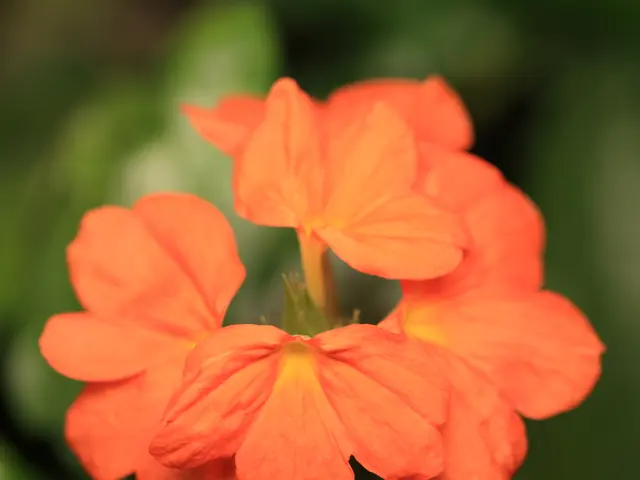Scientists pondered whether our brains created the perception of the hue, purple.
The Fascinating Tale of Color: Purple's Mind-Bending Existence
Color, a phenomenon that delights our eyes, paints our world, and ignites our imagination, starts with the zest of light. But when we delve into the intricacies of this vibrant spectacle, we find ourselves tangled in the enigma of our very perception. Take the color purple, for instance - a delightful mix of red and blue that might not exist in nature, but reigns as a royal symbol of power and wealth.
Chasing the Rainbow: A Look at Light and Color
Let's trace the journey of light to understand its role in our colorful world. When the radiation from the sun strikes our dear planet, Earth, it showers a variety of wavelengths, from the long, such as infrared rays, to the short, like X-rays and ultraviolet rays, which are damaging to our bodies.
The portion of the spectrum that truly interested us, however, is the visible light, representing a meager 0.0035% of the electromagnetic spectrum. This is what we perceive as a resplendent rainbow of colors. Starting from the long, we have red, followed by orange, yellow, green, blue, indigo, and violet.
Prying into the Eyeball's Secret Garden
Our intriguing perception of color begins with the help of specialized receptors nestled at the back of our eyeballs – cones. Humans have three types of cones: long wave (red), mid wave (green), and short wave (blue). Each cone dances to the tune of a particular wavelength, collecting and relaying the information to the brain.
Deciphering the Brain's Color Code: From Wavelengths to Hues
Once these electrical signals reach the brain, it works like a talented cipher, decoding the complex information and making an educated deduction about the color we're seeing. Zab Johnson, an executive director and senior fellow at the Wharton Neuroscience Initiative at the University of Pennsylvania, explains it delightfully, "Our machinery is sort of doing this complex sort of calculation of these three different ratios all the time."
Now, you ask, "So what about purple?" Well, purple finds its origins in the bending of this linear visible spectrum by the brain, when the short-wave (blue) and long-wave (red) cones are lit up, coming together to form purple and magenta. Despite not being a real wavelength, purple continues to mesmerize us for millennia, captivating our hearts and artistic sensibilities.
A Historical Love for Purple: Royalty, Magic, and More
Purple has donned many hats since ancient times. Once a rarity reserved for the rich Phoenicians who ground sea snails to create Tyrian purple, a luxurious dye, today's vibrant purple palette is accessible to all. However, the majesty and mystery surrounding purple persist, weaving a tale of wealth, power, and even magic. Narayan Khandekar, director of the Straus Center for Conservation and Technical Studies at Harvard Art Museums, recognizes, "So that connection still exists, even though there are other versions of purple available now."
Wrapping Up: The Magic of Color and the Beauty of Perception
So, does purple exist outside our minds? Not exactly. But in the grand, confusing labyrinth that is our brain, this peculiar convergence of blue and red hues creates a unique, otherworldly beauty that deserves our admiration. As Zab Johnson beautifully puts it, "Now purple is even more special."
1. As we explore the historic significance of colors, let's delve into the royal symphony of power and wealth, where purple reigned supreme.
2. The role of science in understanding our perception of color is just as important as the study of health-and-wellness, fitness-and-exercise, and mental-health. Nutrition, for instance, plays a crucial part in maintaining our eye health, ensuring our colorful world remains vibrant.
3. With advancements in technology, the luxurious dye Tyrian purple, once only accessible to a select few, is now available to all. This democratization of color mirrors the widespread access to information and knowledge in today's world.
4. As we reflect on the captivating history and science behind colors, we must not forget their impact on our emotional well-being. Just as different wavelengths of light compose a rainbow, diverse hues influence our emotional landscapes, intertwining beauty with psychology.








